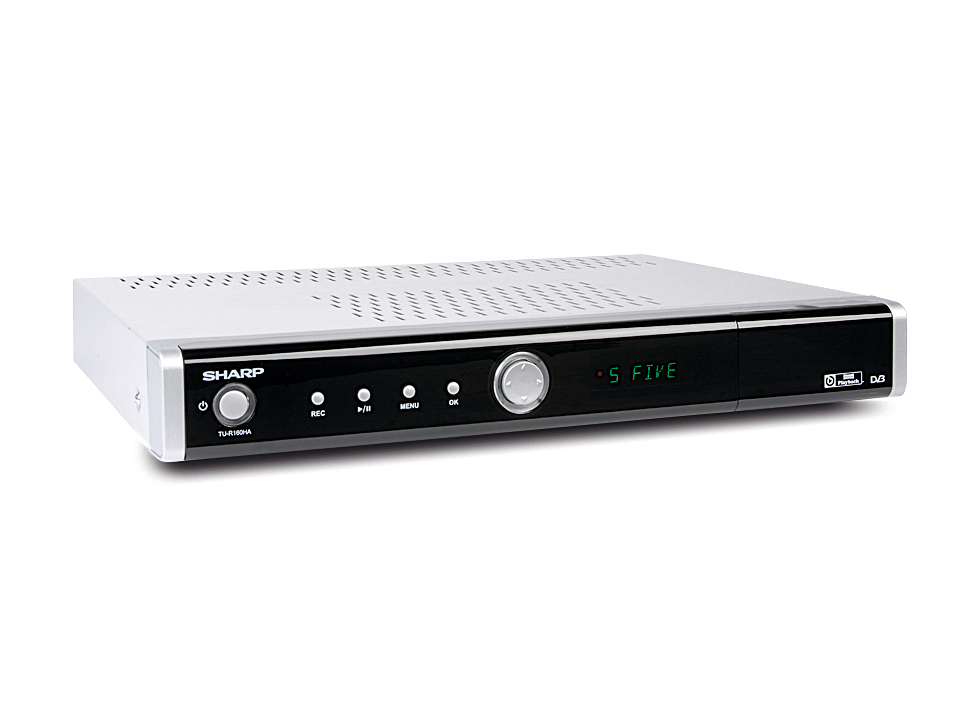TechRadar Verdict
Sharp's is a more serious attempt at a Freeview Playback box, but it lacks top quality pictures and features
Pros
- +
160GB hard disk
- +
Optical digital output
- +
Two-channel recording
Cons
- -
Dull design
- -
Picture noise
- -
Single RGB Scart
Why you can trust TechRadar
With digital switchover looming, the powers that be in charge of digital terrestrial TV have come up with a new badge for the AV industry: Freeview Playback. Put simply, it means that any kit sporting the logo can record TV programmes in a manner akin to the much-publicised and widely adored Sky+ box.
The main difference is that Freeview Playback doesn't involve a monthly subscription and so should appeal to the masses.
And while it's quite some way from perfect, Sharp has produced the finest Freeview Playback box yet. The key strength of this machine given its price is the generous 160GB hard disk.
Still, although it's worth the larger outlay, don't get too excited because if you fall in love with Freeview Playback's funky recording features it's likely that you'll soon find that the TU-R160HA's 83 hours' worth of space is a touch restrictive.
Somewhat lacking in style, the TU-R160HA smacks of a foot-in-the-water product from Sharp. It may not have a stunning design, but there are plenty of appealing options located around the back of the TU-R160HA.
Alongside its two Scarts is an optical digital audio output, a crucial connection that enables the box to slot neatly into any home cinema setup.
This comes as great news if you've got an amplifier equipped with Dolby Pro-Logic II (or other similar audio codecs) that can produce 5.1 surround sound from normal stereo TV programmes. Freeview will broadcast with 5.1 audio one day in the not too distant future, so it will eventually prove to be a great asset.
There are also some stereo audio in and outputs that enable the TU-R160H to be used with external audio equipment of any age.
The box even features a RS232 port, which means that it can be integrated into a custom installation featuring central control pads, although we're pretty sure a Sky+ box would still be favourite among the most demanding customers. Oddly, there's an empty slot under a front flap that may hint at a better-equipped model in the near future.
Despite all of these options, those wanting to archive a lot of programmes to a VHS or DVD recorder will face the problem of there being only one RGB Scart, so you're restricted to choosing between S-video or composite video quality.
As for Freeview Playback features, Sharp's box can record two channels simultaneously, as long as you are watching one or a previously archived recording.
Series links are missing but Sharp has confirmed that this will be rectified by an over-the-air upgrade. Meanwhile, the box does display alternate broadcast times when you select a programme to be recorded.
Another drawback is its inability to record in varying qualities, so the capacity of the hard disk can't be optimised for efficiency.
At least its well laid-out library of recordings offers a way to compile a playlist for basic archiving, as well as some limited editing options such as chapter insertion.
The TU-R160H's time shifting feature, which enables the pausing of live TV for up to two hours, is rather sluggish to respond, although scanning through the footage to catch up with real-time TV is a smooth process.
Its blue onscreen menus and eight-day electronic programme guide are fast and nicely laid out, making the process of setting recordings a simple process.
Another feature central to the TU-R160HA's success in overcoming Goodmans' challenge is its genre search. A touch of a few buttons brings up a list of all movies playing on a certain day or week, which is perfect for a Sunday night session of setting the upcoming week's recordings.
This clever feature brings the Freeview Playback experience closer to Sky+ than Goodmans' effort; fast forward a week and you get a library of movies you can access on demand.
Although colours can be a touch over-cooked and there's too much picture noise when it's used with a bigscreen TV, the TU-R160HA produces pictures that are always watchable.
The low bitrate of Freeview broadcasts on some channels is handled rather well by the unit, although there is no upscaling technology present, which is a real shame, considering its price.
This is a product aimed primarily at introducing new features to the market rather than cutting-edge picture quality.
Stereo sound delivered through the Scart socket gives a reasonable separation, although it's tempting to rely solely on the optical digital audio output if you have a newer home cinema, or the stereo audio outputs if you're using an older amplifier. It's by avoiding the Scarts that the TU-R160HA delivers excellent stereo that features plenty of three-dimensional depth.
Sharp's box is responsive and easy to use but the company's first foray into Freeview Playback still leaves us feeling slightly short-changed, even though it boasts a few more features than the competition.
Picture quality is very much on a par and, despite the TU-R160HA's higher price, we're not really convinced that there's any such thing as a high-end Freeview Playback box available yet.
For now, though, Sharp's contender is as good as it gets.
Tech.co.uk was the former name of TechRadar.com. Its staff were at the forefront of the digital publishing revolution, and spearheaded the move to bring consumer technology journalism to its natural home – online. Many of the current TechRadar staff started life a Tech.co.uk staff writer, covering everything from the emerging smartphone market to the evolving market of personal computers. Think of it as the building blocks of the TechRadar you love today.
